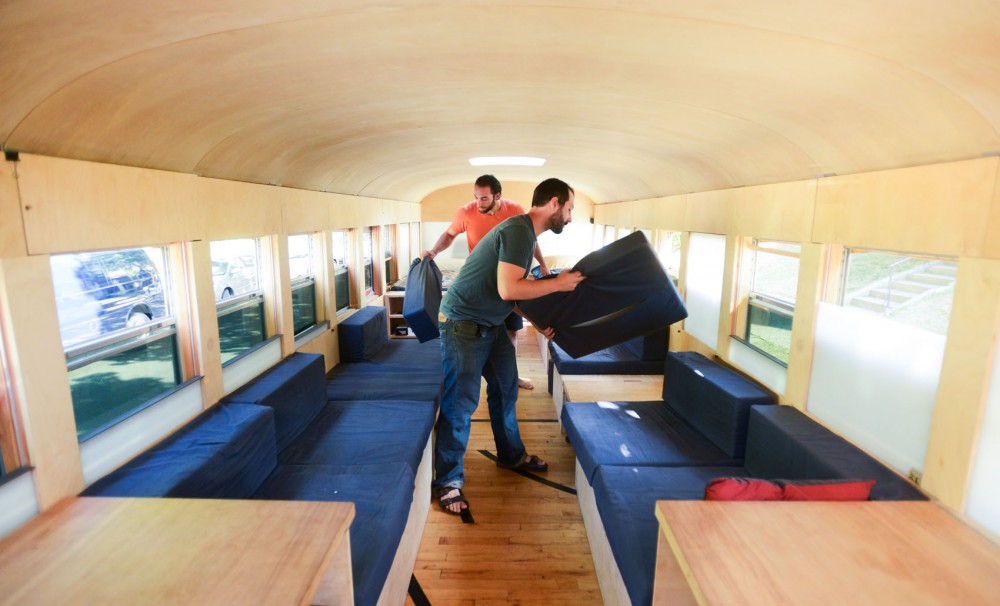Hank Butitta paid no attention to the falling objects and open shelves as his mobile home turned a corner in Uptown Minneapolis last week.
While a friend drove around the neighborhood, the University of Minnesota alum relaxed on a couch inside his graduate thesis project — a $3,000 school bus he purchased on Craigslist and converted into a small living space.
Butitta got his master’s degree in architecture last spring and took the bus on a nearly month-long tour across the western half of the United States late this summer.
The bus has garnered international attention since the road trip started, and Butitta said the University provided him with the resources and flexibility he
needed to complete the project.
Thomas Fisher, dean of the College of Design, said that in his 17 years at the University, this is the first time anything like Butitta’s project has been done.
“He is a very energetic and determined person,” Fisher said.
Fisher said that initially, some University faculty members were unsure whether he could complete his project on time. But his adviser, Adam Marcus, approved it anyway.
“He looked at me like I was crazy and said, ‘Go for it,’” Butitta said.
The ‘tiny house’ movement
Butitta originally wanted to build a small cabin on his grandfather’s land in central Wisconsin for his graduate thesis. But local codes prevented him from building as small as he wanted, he said, so he turned to the bus.
“We realized that if we were on wheels and registered as a vehicle, we could do whatever we wanted,” Butitta said.
To make the school bus a home, he added wood paneling to the walls and built custom furniture — including couches that double as beds — to provide living space for six people.
The bus is part of a trend, known as the “tiny house” movement, which encourages people to use design to compensate for lack of space.
“The idea behind it is downsizing your life to live more responsibly, both environmentally and financially,” said Ryan Mitchell, editor of TheTinyLife.com.
Mitchell’s website defines a “tiny house” as being 100 to 400 square feet in size.
Fisher said small housing is commonplace for people in other parts of the world, but not for many Americans.
“What we’re seeing in the United States is an alignment of our expectations with those of the rest of the world,” he said.
Mitchell said that although remodeled buses have been done before, Butitta’s bus is “both functional and beautiful” and is a perfect example of the tiny house movement.
Butitta said he recognizes that the “tiny house” way of living isn’t for everyone, but encourages people to consider how much space they realistically need to live.
Fisher said that with proper design, tiny houses have the potential to be just as comfortable as larger ones.
Butitta set out on his initial trip without a specific goal in mind. But after the amount of attention it got, he said he’s looking to take the bus on another tour. Though he’s unsure where it will take him next, he said he wants the bus to inspire creativity in others.


